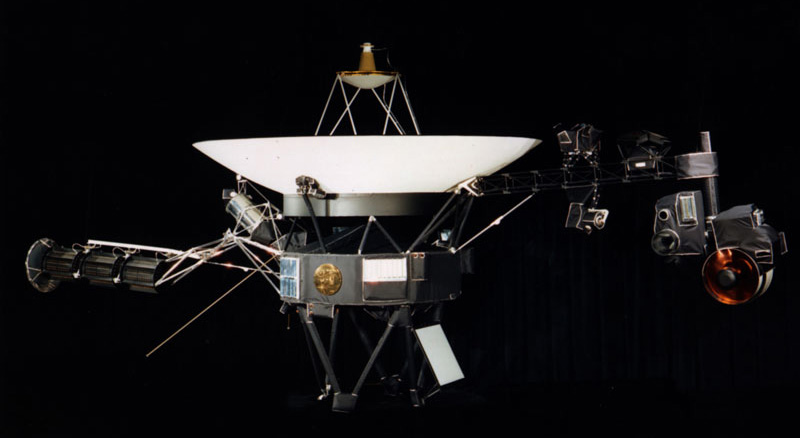The Voyager spacecrafts are sort of like the Betty Whites of astronomy… or is she the Voyager of entertainment?
There’s good news from beyond our solar system. Voyager 2 is working again!
This is a craft that launched in the mid 1970s, visiting the four biggest planets in the solar system before flying beyond the solar system. That’s tens of billions of miles away.
Essentially it encountered a kind of error that caused it to shut down some of its systems to conserve power, since it’s only got so much fuel left all these years later.
Scientists were able to turn the scientific instruments back on in the ultimate example of working remotely. They sent directions beyond the reach of the sun!
The way we send those commands is pretty basic, but with twists to make up for the extremely long distance.
Voyager 1 and 2 each have a 23 watt radio transmitter, which is more than a cell phone uses to send out its signals, but much less than the typical radio station.
But they also have nice long antennas to send out their signals, and the signals are sent at a frequency range where there’s not a lot of interference.
Meanwhile on Earth, we have nice large receivers to pick up those signals, with the volume cranked way up, so to speak, so that even these faint signals from far away come through.
There is one catch, though: NASA is doing some maintenance on its transmitters for the next 11 months.
So while we’ll be able to hear from Voyager 2, sending any important messages will have to wait until next year.
In other good news from space, NASA has revealed that space veggies are good for you!
Crews on the International Space Station grew romaine lettuce from seeds and then ate the produce, and it’s apparently just as good for you up there as it is down here.
So if we ever send humans to the far reaches of the solar system, they will still be able to make salads.
How are the Voyager spacecraft able to transmit radio messages so far? (How Stuff Works)
Voyager 2 Returns to Normal Operations (NASA)
NASA’s Space Lettuce Is Safe And Nutritious, Paving Way For Crops On The Moon And Mars (Newsweek)
Backing Cool Weird Awesome on Patreon is like taking a trip through the cosmos

